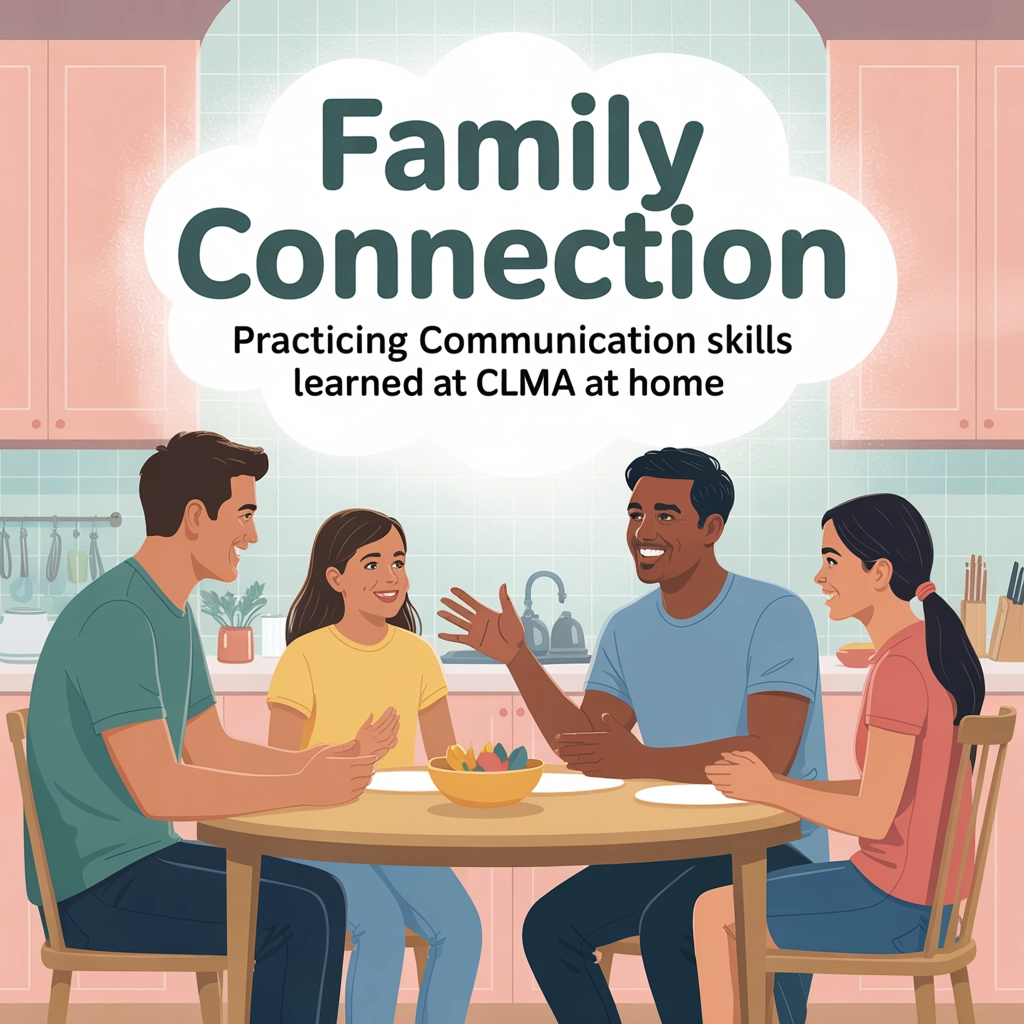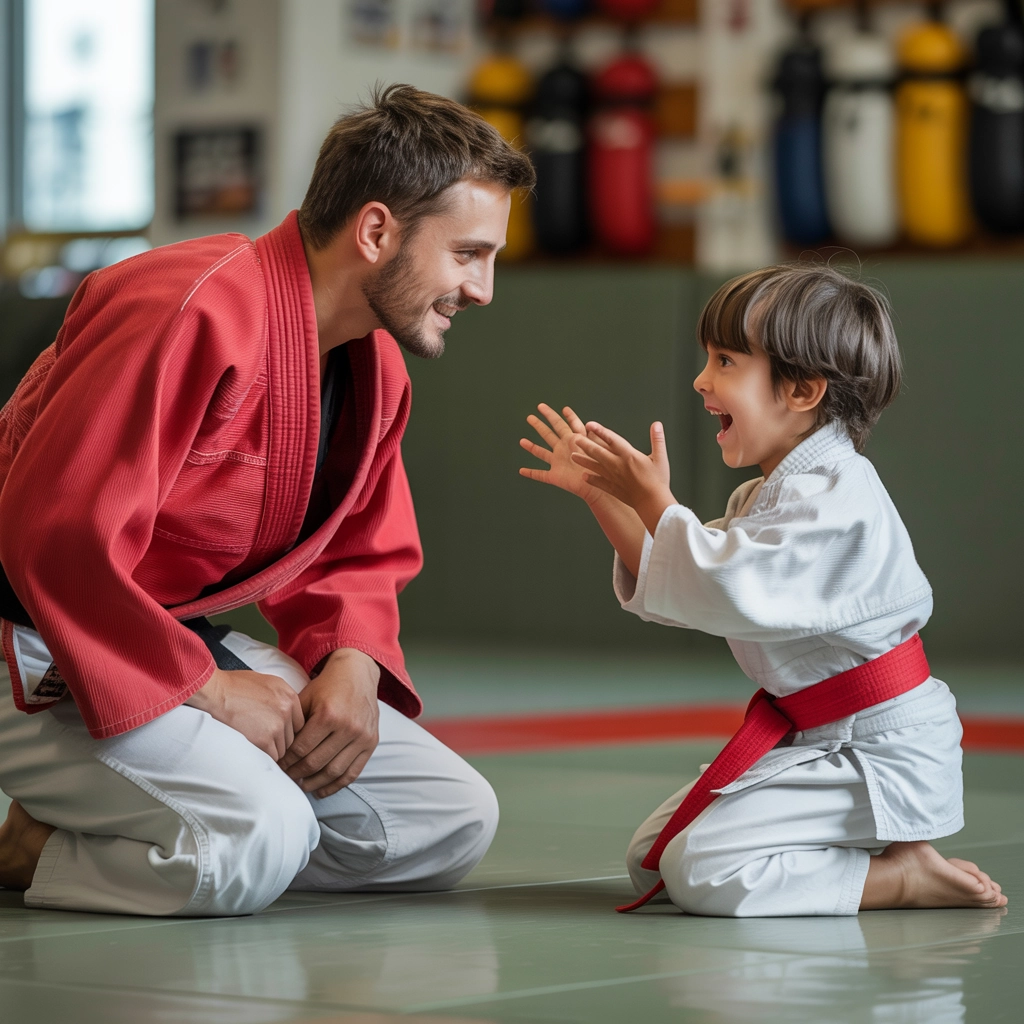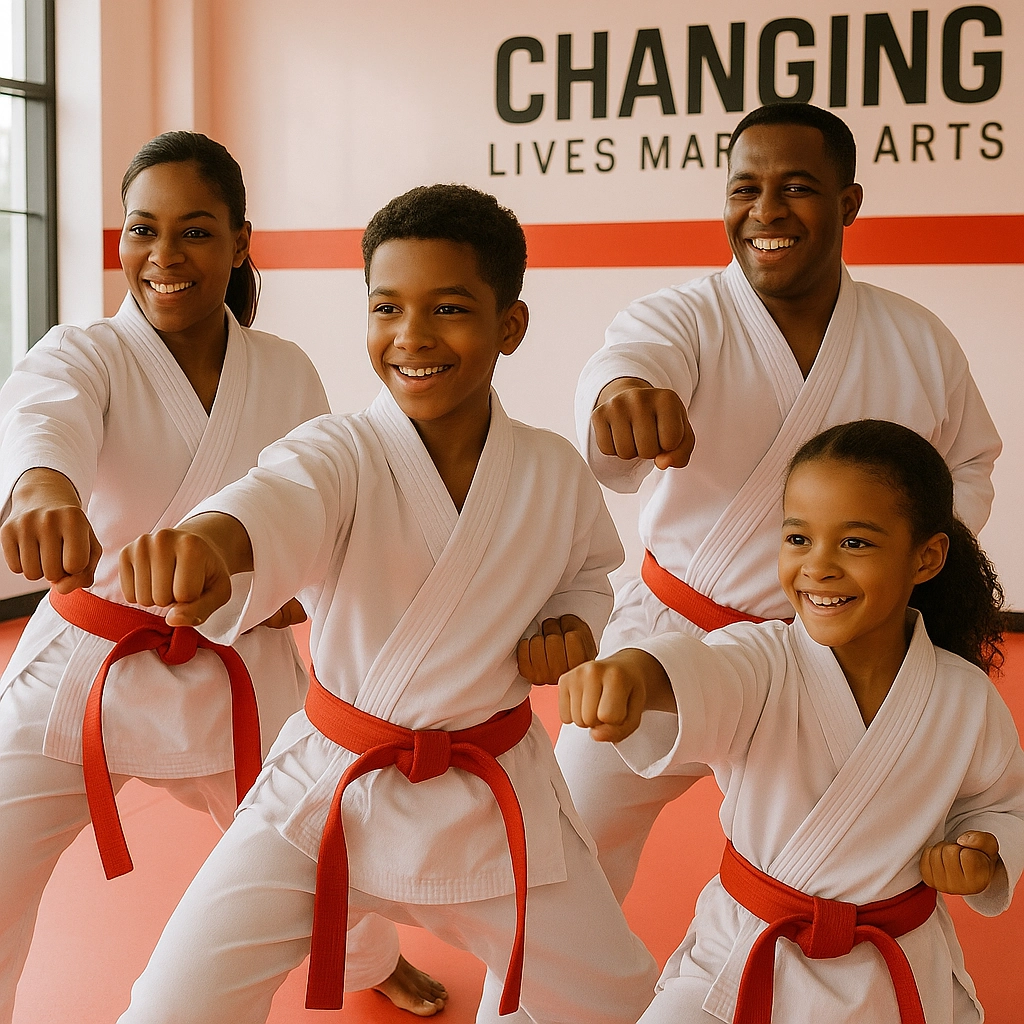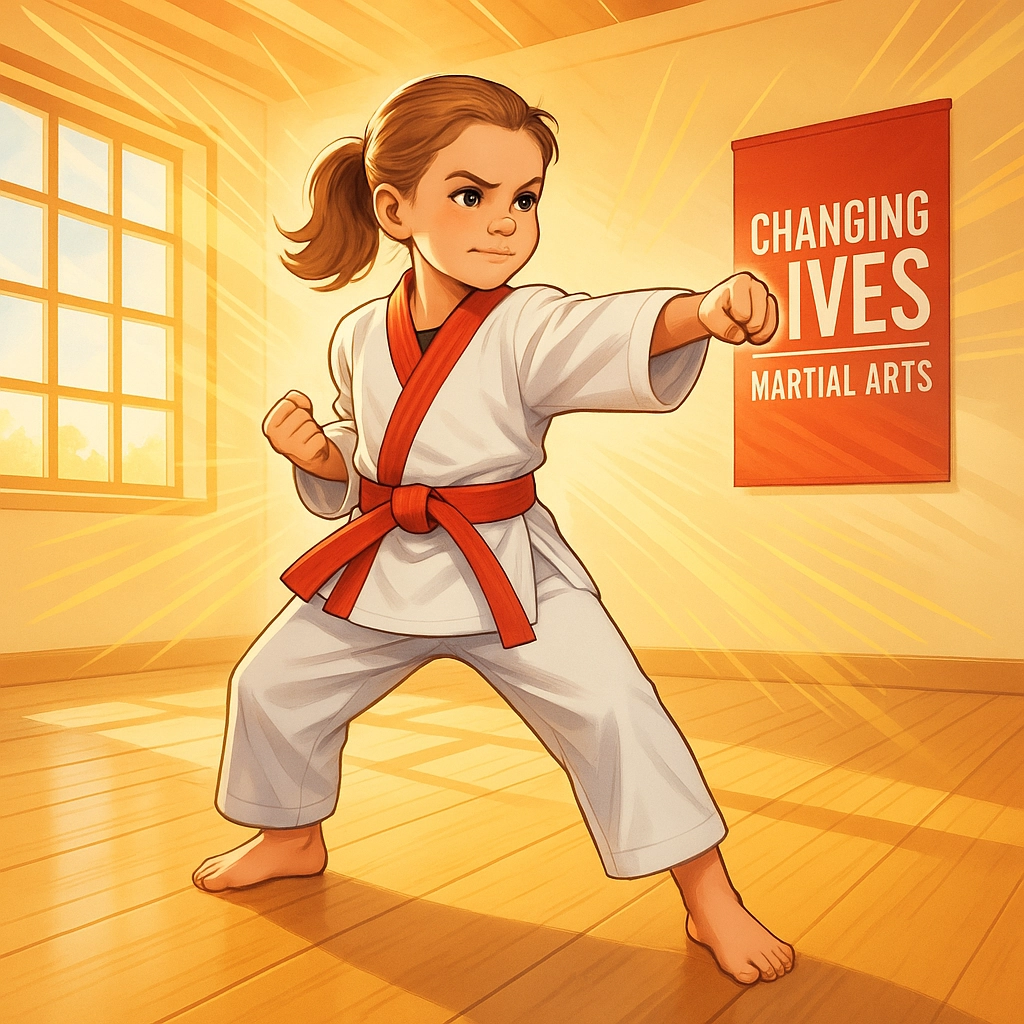
Family Connection: Practicing Communication Skills Learned at CLMA at Home
At Changing Lives Martial Arts, we’ve always believed that the skills learned on the mat extend far beyond physical techniques. One of the most valuable life skills we emphasize is effective communication. In our dojo, students learn to communicate clearly, listen actively, and express themselves with confidence—skills that are just as powerful at home as they are in training.
This month, as we focus on communication as our featured life skill, we’re exploring how families can reinforce these valuable lessons outside the dojo. When the techniques we teach become part of your family’s daily routine, the benefits multiply exponentially!
Communication Skills Developed Through Martial Arts
Before diving into home practice strategies, let’s look at the communication foundations we build at CLMA:
Verbal Clarity and Confidence
In class, students learn to respond with clear “Yes, Sir!” or “Yes, Ma’am!” answers. This practice builds vocal confidence and teaches the importance of clear, direct communication. Students also learn to articulate questions when they need help and to express themselves with respect and assertion.
Active Listening
Martial arts training requires careful attention to instruction. Students develop the ability to focus on the instructor, process information quickly, and respond appropriately. These listening skills are crucial for both successful training and meaningful relationships.
Non-Verbal Communication
A significant portion of martial arts training involves reading and using body language. Students learn to recognize stances, anticipate movements, and interpret subtle physical cues—all without words. This heightened awareness of non-verbal communication creates more perceptive communicators.
Emotional Regulation
Through challenging drills and sparring sessions, martial artists develop the ability to manage emotions and communicate effectively even under pressure. This emotional intelligence allows for clearer communication during difficult conversations.
Bringing CLMA Communication Skills Home
Now for the exciting part—how can you reinforce these valuable skills at home? Here are practical strategies to strengthen your family’s communication using lessons from the dojo:
1. The Family Dojo Circle
Just as we begin and end each class with a moment of focus and respect, consider implementing a “Family Dojo Circle” at home.
How it works: Once a week, gather your family in a circle (perhaps before dinner) where each person has uninterrupted time to share something important to them. Use a special object—maybe a small trophy or belt—as a “talking piece” that designates whose turn it is to speak.
CLMA Connection: This practice reinforces the dojo values of respect, taking turns, and giving full attention to the speaker—skills our students practice in every class.
2. Active Listening Challenges
Active listening is essential both in martial arts and family communication.
How it works: Create a fun game where one family member describes something (like their day or a favorite movie) for one minute. The listener then has to paraphrase what they heard, including the feelings expressed. Award points for accuracy and detecting emotions!
CLMA Connection: In class, students must listen carefully to instructions and demonstrate understanding through their actions. This game builds the same skills in a playful home setting.
3. Non-Verbal Communication Practice
Body language makes up a significant portion of our communication, something martial artists become very attuned to.
How it works: Try a family game of charades specifically focused on emotions and needs. Alternatively, practice “mirroring” exercises where family members face each other and mirror the other’s movements and expressions, building non-verbal connection.
CLMA Connection: In sparring and partner drills, our students learn to read body cues and respond appropriately—skills that translate directly to better emotional intelligence at home.
4. “Pause and Respond” Technique
Martial arts teaches the value of responding thoughtfully rather than reacting impulsively.
How it works: Establish a family signal (like a hand gesture) that anyone can use when emotions are running high. This signal means “I need a moment to collect my thoughts.” Respect this pause, and then resume the conversation with clearer heads.
CLMA Connection: In training, students learn to center themselves before and after each exercise. This same centering technique can transform heated family discussions into productive conversations.
5. The “Three Positions” Communication Method
This technique builds empathy and perspective-taking.
How it works: When facing a disagreement, family members practice viewing the situation from three positions:
- First position: Your own perspective
- Second position: The other person’s perspective
- Third position: An objective observer’s view
CLMA Connection: In martial arts, students must constantly shift perspectives—understanding their own movements, anticipating their partner’s actions, and viewing the interaction as a whole. This mental flexibility builds tremendous communication skills.
6. Respectful Disagreement Practice
Learning to disagree respectfully is a valuable skill.
How it works: Establish family guidelines for healthy debates. Use phrases like “I understand your point about X, and I see it differently because…” Practice discussing controversial topics (age-appropriate ones!) using these frameworks.
CLMA Connection: In the dojo, students learn that respect doesn’t mean always agreeing. They can spar vigorously while maintaining respect for their opponent—a perfect model for family disagreements.
Communication Benefits for the Whole Family
When families practice these communication skills together, everyone benefits:
- Children gain confidence in expressing their thoughts and feelings
- Parents become better listeners, truly hearing their children’s concerns
- Siblings learn to resolve conflicts more independently and respectfully
- Family bonds strengthen through deeper, more meaningful connections
- Home atmosphere becomes more peaceful with fewer misunderstandings
- Stress levels decrease when communication flows smoothly
As Mrs. Shannon Guse often says in our parent seminars, “The communication skills learned through martial arts don’t just create better students—they create stronger families.” We see this transformation regularly at Changing Lives Martial Arts, where improved communication leads to more harmonious homes.
Reinforcing the Communication Cycle
Effective communication isn’t a one-time event but a continuous cycle of speaking, listening, understanding, and responding. Here’s how to keep that cycle flowing smoothly:
Create Communication-Friendly Spaces
Designate times and places in your home where focused communication is the priority. This might be the dinner table (with devices put away) or a special weekend family time. When the environment supports communication, it happens more naturally.
Acknowledge Progress
When you notice your child using communication skills learned at CLMA—like making eye contact during conversations or expressing frustration appropriately—acknowledge it! “I noticed you used your words instead of getting upset when your sister took your toy. That’s using your martial arts focus!”
Model What You Teach
Children learn by watching. When parents demonstrate the same communication skills practiced at CLMA—respect, active listening, emotional regulation—children internalize these behaviors more deeply.
Connect with CLMA Instructors
Don’t hesitate to speak with your child’s instructors about specific communication challenges you’re facing at home. Our team at Changing Lives Martial Arts can reinforce particular skills during class time, creating a powerful partnership between dojo and home.
Beyond Words: The Deeper Impact
The communication skills developed through martial arts and reinforced at home go beyond simply improving conversations. They build the foundation for:
- Self-advocacy – Children learn to speak up for themselves appropriately
- Conflict resolution – Families develop healthier ways to work through disagreements
- Emotional intelligence – Everyone becomes more aware of their own and others’ feelings
- Leadership abilities – Clear communicators naturally emerge as leaders
- Lasting relationships – The communication skills learned now will serve your children in future relationships
Join Our Communication Journey
This month, we challenge all CLMA families to intentionally practice communication skills at home. Share your experiences, challenges, and successes on our social media or when you visit the dojo. We love hearing how martial arts training is strengthening family connections!
If you’re not yet part of our CLMA family but are interested in how martial arts can develop these essential life skills in your child, we invite you to schedule a visit. See firsthand how our instructors, including Shannon Guse, Matthew Guse, and Chief Instructor Lainalee Rambow, build communication skills while teaching martial arts techniques.
The path to better family communication may begin in our dojo, but its greatest impact happens at home. By reinforcing these skills daily, you’re not just creating better conversations—you’re building stronger family bonds that will last a lifetime.
Ready to take your family’s communication to the next level? The journey begins with a single conversation. Why not start today?


